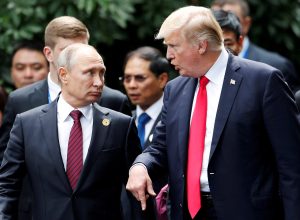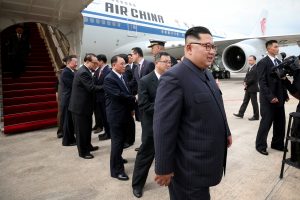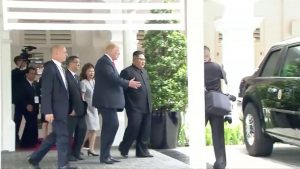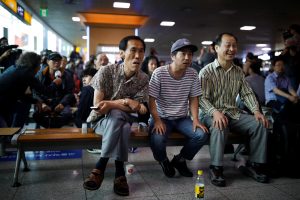
By Andrew Chung
NEW YORK (Reuters) – From the moment Justice Anthony Kennedy announced his retirement from the U.S. Supreme Court last week, speculation has centered on whether his replacement would vote to overturn a woman’s right to abortion.
But the individuals considered top contenders for Kennedy’s seat have produced a sparse record of legal rulings and writings on the subject, which makes it hard to predict how they might rule in abortion-related cases.
President Donald Trump promised during his campaign to appoint “pro-life justices” who would overturn Roe v. Wade, the landmark 1973 ruling that legalized abortion nationwide. In recent days, however, the president has said he will not ask candidates about their views on the subject. Trump has said he will announce his nominee on July 9 and that he will make his selection from a list of candidates compiled by conservative legal activists.
On Friday, the president said he had narrowed the field to about five, and sources familiar with the president’s thinking say the top contenders are Brett Kavanaugh, a judge on the District of Columbia U.S. Court of Appeals; Amy Coney Barrett, who was named by Trump to the Chicago-based 7th U.S. Circuit Court of Appeals; Thomas Hardiman, who serves on the Philadelphia-based 3rd U.S. Circuit Court of Appeals; Raymond Kethledge of the Cincinnati, Ohio-based 6th U.S. Circuit Court of Appeals; and Amul Thapar, whom Trump named to the 6th Circuit.
Of that group, Barrett, a professor at Notre Dame Law School before Trump appointed her to the appeals court, has attracted the most attention on abortion.
She has spoken publicly about her conviction that life begins at conception, and in a 2003 law journal article, she argued that courts could be more flexible in overturning prior “errors” in precedent. She noted that courts have struggled over when to keep “an erroneous decision” on the books, citing as an example Planned Parenthood v. Casey, a major 1992 Supreme Court ruling that upheld Roe.
Some progressive groups have pointed to the article as evidence of Barrett’s willingness to overturn Roe. But she has also raised doubts about whether the high court would ever overturn Roe, according to a 2013 article in Notre Dame Magazine.
Her traditional Catholic beliefs became a flashpoint last September during her confirmation hearing in the Senate. “The dogma lives loudly within you,” Democratic Senator Dianne Feinstein said to Barrett during the hearing. Barrett told the senators that her faith would not affect her decisions as a judge.
While little is known about Kavanaugh’s personal views on abortion, last October he was part of a panel of judges that issued an unsigned order preventing an illegal immigrant teenager detained by the government from immediately obtaining an abortion. That decision was overturned by the full appeals court a few days later.
Dissenting from that decision, Kavanaugh warned that the court was embracing “a new right for unlawful immigrant minors in U.S. government detention to obtain immediate abortion on demand.” Litigation over the issue is continuing.
Hardiman joined an opinion in 2010 that overturned the conviction of an anti-abortion protester arrested outside the Liberty Bell Center in Philadelphia. Though the court said park rangers had violated his free speech rights, the case was not about the right to abortion itself.
In April, Hardiman allowed the Little Sisters of the Poor, a Catholic order of nuns, to intervene in a lawsuit against Trump’s plan to expand employer exemptions from an Obamacare birth control insurance requirement. For years, the organization has been at the forefront in challenging the mandate’s legality. Though the case was not directly about abortion, groups favoring abortion rights worry that Hardiman’s ruling signals his sympathies on the issue.
Democratic politicians and liberal groups have said they assume that all those on Trump’s list of potential candidates would overturn Roe v. Wade, given that Trump has said he will only consider such candidates.
“I take the president at his word,” said Daniel Goldberg, legal director for Alliance For Justice, a liberal legal advocacy group that has researched Trump’s judicial nominees.
Leonard Leo, a conservative legal activist on leave from the Federalist Society, is advising Trump on judicial selections, and he said no one asked the candidates about their views on abortion before they were placed on the list.
“These people weren’t even talked to when they were put on the list,” said Leo. “No one was asked these questions and as far as I know no one has been asked these questions if they were brought into the process in the White House.”
Republicans control the Senate by only a slim majority, making it important for Trump’s nominee to win the support of all Republican members, including moderates.
On Sunday, Republican Senator Susan Collins said on CNN that she would not support a nominee who “demonstrated hostility” to Roe.
(Reporting by Andrew Chung; Editing by Sue Horton)













